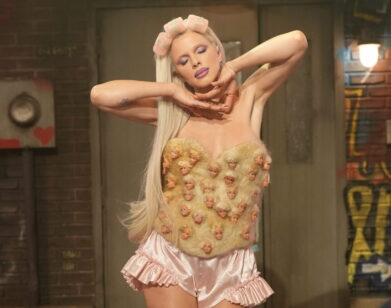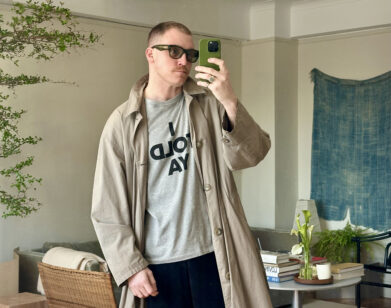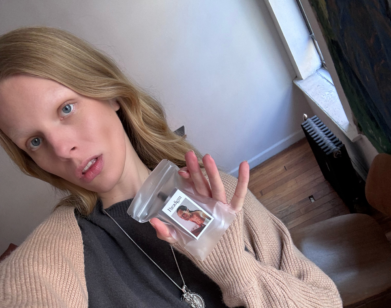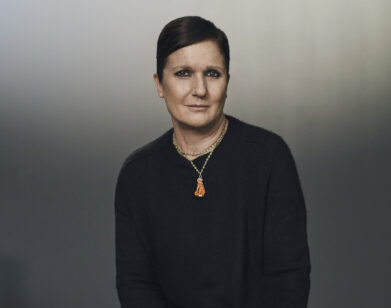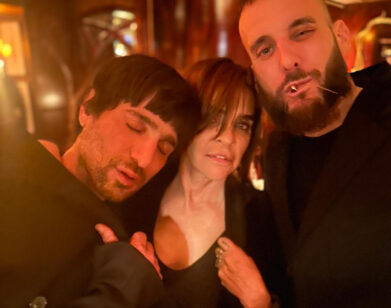Daphne Guinness Gets Experimental for Joe Lally
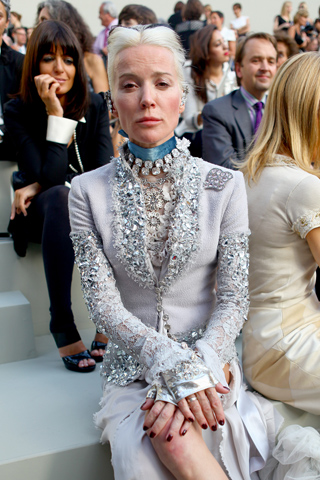

TRAILER FOR THE BLACK AND WHITE MAZE
OF THE PAINTED ZEBRA
Daphne Guinness’s guest starring role in Joseph Lally’s The Black and White Maze of the Painted Zebra was meant to be. As Lally explained, the the title of his art film describes, “When a person gets lost inside their own mind, so the maze becomes the pattern of a zebra, and when the zebra becomes another color—no one is any longer their true self.” Though he came up with the concept long before he met Guinness, there could be no better part for a woman famous for her platinum-and-black streaked hair. I spoke with Daphne and Joseph via e-mail about the project’s many male models and Warholian bent.
KELLEY HOFFMAN: This is an experimental film about the mental breakdown of a fictional baseball legend. What attracted you to the project?
DAPHNE GUINNESS: I met Joseph, the director, in Tangiers, and it turned out we knew many of the same people. In Tangiers we discussed the idea of the return to art films–it was not the subject matter itself but his approach that gained my curiosity.
HOFFMAN: Daphne told me you have similar tastes in cinema—what are a few that you share?
LALLY: We both love the French films of Marguerite Duras, one in particular called India Song. Shot in 16mm, the actors are silent while you hear various conversations from the past on the audio. We also are fans of actresses Jean Seberg and Gene Tierney and Hollywood films of the golden era.
HOFFMAN: Can you describe some of the experimental aspects of your film?
LALLY: I shot the first part more like documentary or like the dramas of John Cassavettes. Then the film becomes increasingly abstract and experimental until it is no longer a narrative but what I call a “nerve meter”–testing the endurance and perceptions of the audience.
HOFFMAN: Daphne, I know you were the producer and also the guest star. Can you tell me about your character? How did you get inspired for your role?
GUINNESS: I am Pamela, the wife of the star, Tyson, whom I have worked with before on shoots. Joseph approaches the text like Shakespeare did in his time as a director. He only hands out the pages that is your part. You do not know the rest of the text. He wanted me to approach the role as a beautiful silent ghost–kind of a modern day Ophelia.
HOFFMAN: You are known for your incredible taste in fashion. What were the costumes, hair and make-up like in the film?
GUINNESS: He asked me to style the character and to do my own hair and make up, as if we were doing a Warhol type of production. The clothes were my own and I would just feel the part.
HOFFMAN: Joseph, what was your inspiration for your film’s overall style?
LALLY: I saw David Lynch’s Inland Empire, which was shot with a medium grade video camera, and I wanted to do a male version of that film. I knew I wanted model Tyson Ballou to play the lead because I sensed a tremendous actor in him. Then I saw the model Charles Devoe at a party doing this strange British character the entire night, and I based his character on that. I ended up using all male models, who turned out to be better at acting than the current ones I see now on the screen. Michael Brager is like a young Henry Fonda and Tyson really went all the way in this role and delivered great performance, as the whole cast did. I was lucky! Daphne is amazing on camera. It is not a normal film, that is for sure.

